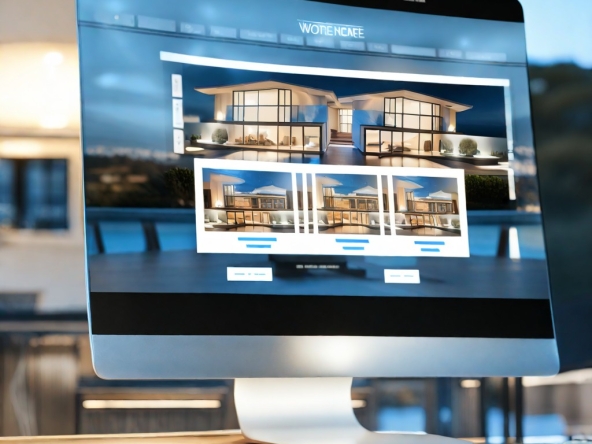Congratulations on starting or updating your website! Having a standout realtor website is crucial for branding and staying ahead of the competition.
When redesigning, you might encounter some unfamiliar terms. To help you and your design team communicate effectively, here’s a glossary of essential real estate web design terms.
Above/Below the Fold
Originally from newspaper design, “above the fold” refers to what you see immediately when a webpage loads, while “below the fold” is everything you need to scroll to view.
Ad Pixel
A tiny piece of code (usually 1×1 pixel) embedded in a webpage that tracks user activity, measures ad performance, and monitors conversions.
Alignment
The arrangement of text, images, and icons on a webpage. Good alignment enhances readability and aesthetics.
Alt Text
Short for “alternative text,” this describes images on a site, helping visually impaired users and improving SEO by integrating keywords.
Backlink
Links on other websites that direct traffic back to yours, boosting SEO, especially if the source is reputable.
Bandwidth
Refers to the data transfer speed or the amount of data that can be moved from a web host. High bandwidth equals faster speeds and more data capacity.
Bounce Rate
The percentage of users who leave a site without exploring further. A high bounce rate can indicate navigational or content quality issues.
Browser
Software like Google Chrome or Firefox that lets you view websites.
Cache
Temporary storage for website content, speeding up repeat visits by preloading data instead of downloading anew.
Call-to-action (CTA)
Invites users to take specific actions on a site, like “Read More” links or strategically crafted prompts like “Remember Everything.”
Cascading Style Sheets (CSS)
A programming language defining the visual style of a webpage, including fonts and colors, ensuring responsive layouts for different devices.
Clickthrough Rate (CTR)
The percentage of visitors who proceed to additional pages, indicating engagement and effective CTAs.
Color Palette/Scheme
A consistent set of colors used throughout a website to create a cohesive brand identity.
Content Management System (CMS)
User-friendly software, like WordPress, for creating and updating website content without coding expertise.
Conversion
Turning a website design into HTML to make it interactive, moving from a static image to a functional web page.
Custom Website Design
A unique, tailor-made website design not based on templates, reflecting a brand’s distinct story and requiring more time to create.
Domain
The unique name of a website, like example.com, serving as its online address.
Favicon
The small icon next to a website name on a browser tab, often a logo, enhancing brand recognition.
Fixed Header
A static bar visible even as users scroll, keeping navigation links accessible at all times.
Focal Point
The main area that draws attention on a webpage, guiding user focus to important content.
Google Tag Manager (GTM)
A tool that simplifies adding and managing marketing tags on a site, tracking user interactions and behaviors.
Grid
A framework of intersecting lines that helps organize website content, ensuring clarity and visual appeal.
Hosting
The service that provides storage space for your website, necessary for it to be accessible online.
Hypertext Markup Language (HTML)
The coding language that structures and outlines a website, essential for creating web pages.
Intuitive Design
Designing websites to be easily navigable and user-friendly, ensuring a natural and straightforward browsing experience.
Landing Page
The first page users see upon visiting a website, often designed to encourage specific actions or further exploration.
Mobile-first Design
Focuses on optimizing the website experience for mobile devices before adapting it for desktops.
Mobile Optimization
Designing a website to perform well on mobile devices, with responsive layouts that adjust to various screen sizes.
Navigation
The system enabling movement across a website, including menus and links, facilitating easy access to different sections.
Negative/White Space
The empty space around page elements, enhancing readability and preventing clutter.
Pixel
The smallest unit of a digital image, also used to measure and scale elements on a webpage.
Serif
In typography, these are the small lines at the end of strokes in letters, such as those found in Times New Roman.
Type/Typeface
A set of fonts and characters in various styles, impacting the overall look and feel of text on a website.



